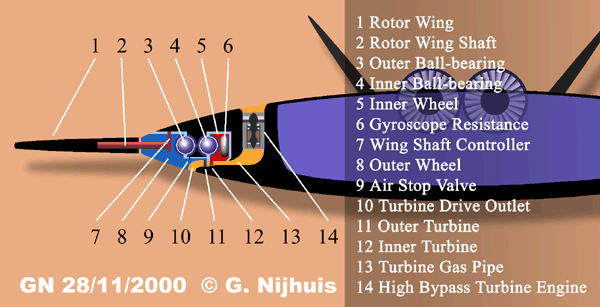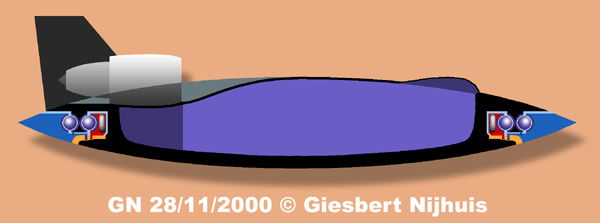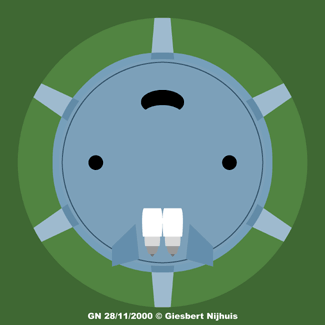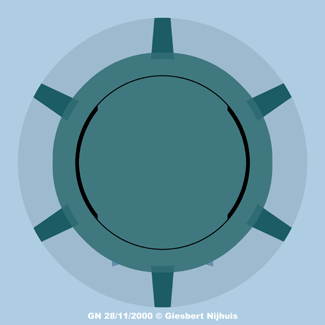# Only 2 high by-pass turbine jet engines.
An aircraft of this (cargo-) size would normally need 4 of these engines. For instance: A Boeing 747 has need for 4 jets at take-off, it would like to have 6 at that time. But when this Boeing 747 is at cruse speed, just 2 jet engines would give sufficient thrust. If these other 2 "superfluous" jet engines were gone, the aircraft would be lighter and have less drag, and only 1 jet engine would be enough (although 2 is safer).
The GN 001 Does not need a jet engine for take-off, so 2 jet engine for propulsion is enough. Its no major disaster if these 2 engines would fail in flight, the GN 001 can land, without propulsion, on any horizontal surface (also on water!).
# Lifting body
The GN 001 has a lifting body. A lifting body produces lift less efficient than a normal wing, but the body of a normal airplane produces drag only. The body's wing load is low, this is good for efficiency.
# Rotor wing
The most complex part of the GN 001
The rotor wing produces lift during VTOL, using aerodynamics.
The rotor wing gives stability during VTOL and forward flight, using gyro forces.
The rotor wing gives flight direction during VTOL and forward flight, using aerodynamics.
To prevent the body from turning in opposite direction of the rotor wing, an inner ring provides gyro resistance on which the outer ring can repel on. (the rotor wings are connected on the outer ring). An other way to solute this problem is to use 2 outer rings, turning in opposite directions, but that would make things very complex.
When in forward flight, the rotor wing produces some lift, even when not turning. Main purpose in forward flight is flight control; all 6 wings can shift angle independently, performing like rudders. The wings profiles are symmetrical.
# The rotor wing's turbines
The rotor wing is turbine powered by the exhaust of 2 turbine engines (2, so one may fail). The air inlet is on top of the disc, creating a small area of low air pressure, resulting in some suck-lift. The air outlet is at the bottom of the disc, redirected downward, creating some thrust-lift.

















